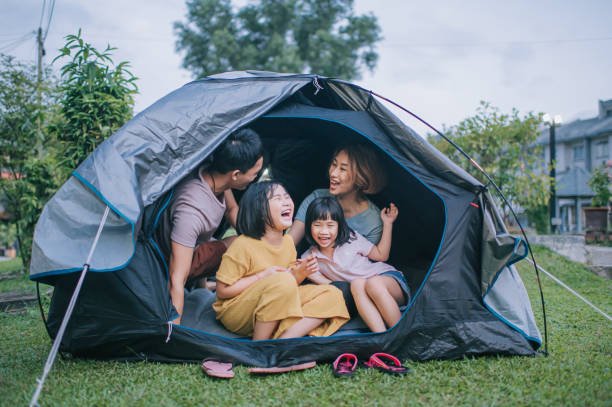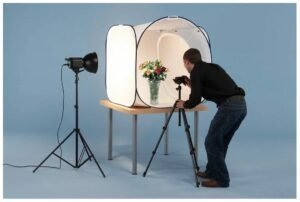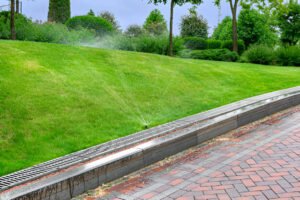Camping is an excellent way to bond with your family and create lasting memories. However, finding the right tent can make or break your camping experience. Large camping tents for families offer ample space, comfort, and convenience, ensuring that everyone has a good time.
-
Tent Capacity and Size
-
Tent Materials and Durability
-
Ease of Setup and Takedown
-
Weather Protection and Ventilation
-
Additional Features and Amenities
-
Brand Reputation and Warranties
-
Budget and Value for Money
Comparison of Top Large Family Camping Tents
| Tent Model | Capacity | Floor Area | Peak Height | Weight | Seasons | Price Range |
|---|---|---|---|---|---|---|
| Coleman Cabin Tent | 8 people | 14′ x 10′ | 6’8″ | 30.4 lbs | 3-season | $$$ |
| CORE 9 Person Tent | 9 people | 16′ x 9′ | 6’6″ | 27 lbs | 3-season | $$$ |
| Ozark Trail 10-Person Tent | 10 people | 14′ x 10′ | 6’6″ | 30 lbs | 3-season | $$$ |
| Browning Camping Big Horn Tent | 8 people | 15′ x 10′ | 7′ | 35 lbs | 4-season | $$$$ |
| CAMPROS Tent | 8-10 people | 17′ x 9′ | 6’6″ | 25.8 lbs | 3-season | $$$ |
Tent Capacity and Size
When it comes to large camping tents for families, capacity and size are crucial factors to consider. You’ll want to ensure that the tent can comfortably accommodate your entire family, including any gear or belongings you plan to bring along.
Sleeping Capacity
Floor Area and Peak Height
Vestibules and Gear Storage
Sleeping Capacity: Most large family camping tents are designed to sleep anywhere from 6 to 12 people. However, it’s essential to remember that the stated capacity is often a bit optimistic. For true comfort, it’s generally wise to choose a tent with a capacity that exceeds your family size by one or two people.
Floor Area and Peak Height: The floor area and peak height of a tent determine the overall living space and headroom. A larger floor area not only provides more sleeping space but also allows for more room to move around and set up camp beds or air mattresses. Additionally, a higher peak height can make the tent feel more spacious and comfortable, especially for taller individuals.
Vestibules and Gear Storage: Many large family camping tents come equipped with vestibules or gear storage areas. These additional spaces are invaluable for storing backpacks, shoes, and other gear, keeping the main living area clutter-free and organized.

Tent Materials and Durability
The materials used in a tent’s construction play a significant role in its overall durability and longevity. When camping with your family, you’ll want a tent that can withstand the elements and stand up to the rigors of outdoor adventures.
Tent Fabrics
Pole Materials
Floor and Rainfly Construction
Tent Fabrics: Most high-quality family camping tents are made from durable and lightweight fabrics such as ripstop nylon or polyester. These materials are designed to resist tearing, water resistance, and UV damage, ensuring that your tent remains in good condition for years to come.
Pole Materials: The poles used in a tent’s structure are typically made from aluminum, fiberglass, or a combination of both. Aluminum poles are lightweight and sturdy, while fiberglass poles are more flexible and can withstand higher winds without breaking.
Floor and Rainfly Construction: The tent’s floor and rainfly are critical components that protect you from moisture and the elements. Look for tents with heavy-duty, waterproof floors and rainflies made from durable, water-repellent materials like polyester or nylon taffeta.
Ease of Setup and Takedown
No one wants to spend hours struggling to set up or take down their tent, especially when camping with family. A tent that is easy to pitch and dismantle can save you valuable time and frustration, allowing you to focus on enjoying your camping experience.
Tent Design and Pole Configuration
Color-Coded or Continuous Pole Sleeves
Instructions and Practice Setup
Tent Design and Pole Configuration: Some tent designs are inherently easier to set up than others. Dome-style tents and those with a simple X-pole configuration tend to be more user-friendly, especially for novice campers.
Color-Coded or Continuous Pole Sleeves: Many modern family camping tents feature color-coded pole sleeves or continuous pole sleeves, which simplify the process of threading the poles through the tent body.
Instructions and Practice Setup: While it may seem obvious, reading the instructions and practicing setup at home can make a significant difference in your camping experience. Familiarity with the tent’s components and assembly process can save you time and frustration when setting up at the campsite.
Weather Protection and Ventilation
Camping with your family can expose you to a variety of weather conditions, from rain and wind to hot and humid temperatures. A well-designed tent should offer adequate protection from the elements while still providing proper ventilation to prevent condensation buildup and keep the interior comfortable.:
Waterproofing and Weatherproofing
Ventilation Systems
Vestibules and Awnings
Waterproofing and Weatherproofing: Look for tents with a high waterproof rating (measured in millimeters or “mm”) and fully sealed seams to keep the rain out. Additionally, tents with sturdy pole systems and aerodynamic designs can better withstand strong winds.
Ventilation Systems: Proper ventilation is essential for preventing condensation buildup and maintaining a comfortable interior temperature. Many family camping tents feature mesh panels, roof vents, or adjustable rainfly vents to promote airflow and cross-ventilation.
Vestibules and Awnings: Vestibules and awnings provide additional covered space for gear storage or lounging, offering protection from rain and sun. These features can be particularly useful when camping with a large group or during inclement weather.
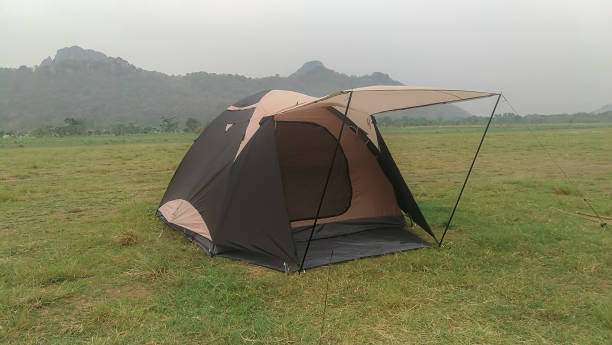
Additional Features and Amenities
While the primary purpose of a tent is to provide shelter, many large family camping tents come equipped with additional features and amenities that can enhance your camping experience.
Room Dividers and Privacy Panels
Electrical Port Access
Storage Pockets and Gear Lofts
Room Dividers and Privacy Panels: For larger families or groups, room dividers or privacy panels can be a welcome addition, allowing you to create separate sleeping areas or changing rooms within the tent.
Electrical Port Access: Some tents include access ports or designated areas for running electrical cords, making it easier to power devices or set up a camping fan or heater within the tent.
Storage Pockets and Gear Lofts: Internal storage pockets and gear lofts can help keep your tent organized and clutter-free, providing convenient places to store small items or hang lightweight gear.
Brand Reputation and Warranties
When investing in a high-quality large family camping tent, it’s essential to consider the brand’s reputation and the warranty offered. A reputable brand with a strong track record of producing durable and reliable products can provide peace of mind, while a comprehensive warranty can protect your investment.
Brand History and Customer Reviews
Warranty Coverage and Duration
Customer Service and Support
Brand History and Customer Reviews: Research the brand’s history and read customer reviews to gauge the overall quality and durability of their products. Established brands with a loyal customer base can be a good indicator of reliable and well-made tents.
Warranty Coverage and Duration: Look for tents with comprehensive warranties that cover manufacturing defects, workmanship, and material failures. Most reputable brands offer warranties ranging from one to several years, with some even providing lifetime coverage on certain components.
Customer Service and Support: In the event of an issue or concern, it’s essential to have access to reliable customer service and support. Consider the brand’s reputation for addressing customer inquiries and complaints in a timely and satisfactory manner.
Budget and Value for Money
While large family camping tents can range widely in price, it’s essential to strike a balance between your budget and the tent’s features, durability, and overall value for money.
Price Range and Budgeting
Long-Term Cost Considerations
Value-Added Features and Amenities
Price Range and Budgeting: Large family camping tents can vary significantly in price, from budget-friendly options under $200 to premium models costing $500 or more. Determine your budget and prioritize the features and quality that are most important to your camping needs.
Long-Term Cost Considerations: While a higher upfront cost may seem daunting, investing in a high-quality tent can pay off in the long run. Premium tents are typically built with better materials and construction, making them more durable and longer-lasting, potentially saving you money on frequent replacements.
Value-Added Features and Amenities: Consider the value-added features and amenities that may justify a higher price point. Tents with room dividers, electrical port access, or advanced ventilation systems can greatly enhance your camping experience and may be worth the extra investment if these features are important to your family’s needs.
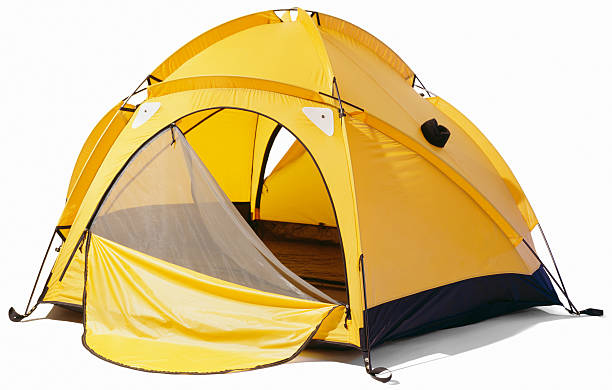
Frequently Asked Questions (FAQs)
How do I determine the right tent capacity for my family?
When choosing a tent capacity, consider not only the number of people but also the amount of gear and personal space desired. As a general rule, it’s recommended to opt for a tent with a capacity one or two people larger than your actual group size for added comfort and space.
Can I use a large family camping tent for backpacking or hiking?
While some large family camping tents are designed to be lightweight and packable, most are not intended for backpacking or long-distance hiking. These tents are primarily designed for car camping or campground use, where weight and packed size are less of a concern.
How important is ventilation in a family camping tent?
Proper ventilation is crucial in a family camping tent, especially when accommodating multiple occupants. Good ventilation helps prevent condensation buildup, which can lead to dampness and potential mold or mildew issues. Look for tents with mesh panels, roof vents, or adjustable rainfly vents to ensure adequate airflow.
What is the difference between a 3-season and 4-season tent?
3-season tents are designed for use in spring, summer, and fall, while 4-season tents are built to withstand harsher winter conditions, including heavy snow and strong winds. 4-season tents typically have more robust pole systems, thicker fabrics, and better insulation, but they are also heavier and more expensive.
How do I properly care for and maintain my family camping tent?
Proper care and maintenance can extend the lifespan of your family camping tent. After each trip, thoroughly clean and dry the tent before storing it in a cool, dry place. Avoid exposing the tent to excessive heat or moisture, which can cause mildew or damage the materials. Additionally, follow the manufacturer’s recommendations for cleaning, reproofing, and any necessary repairs.
Can I use a tarp or footprint under my tent?
Using a tarp or footprint (a waterproof ground cover) under your tent is highly recommended. It provides an extra layer of protection against moisture and abrasion, helping to extend the life of your tent’s floor. Look for footprints or tarps specifically designed for your tent model for the best fit and compatibility.
What are the advantages of a tent with room dividers or privacy panels?
Room dividers or privacy panels can be incredibly useful for larger families or groups camping together. They allow you to create separate sleeping areas or changing rooms within the tent, providing privacy and personal space. This feature can be especially valuable for families with older children or mixed genders.
How do I choose the right tent for different weather conditions?
Consider the weather conditions you’re likely to encounter when camping. For milder weather, a 3-season tent with good ventilation and water resistance may suffice. However, if you plan to camp in colder or more extreme conditions, a 4-season tent with better insulation, stronger pole systems, and enhanced weatherproofing may be necessary.
Closing Words
Choosing the right large family camping tent can make a significant difference in your overall camping experience. By considering factors such as tent capacity, materials, ease of setup, weather protection, additional features, brand reputation, and budget, you can find a tent that meets your family’s specific needs and ensures a comfortable and enjoyable outdoor adventure.
